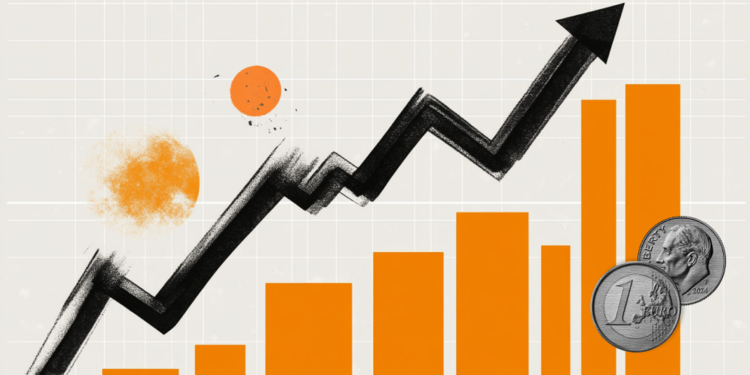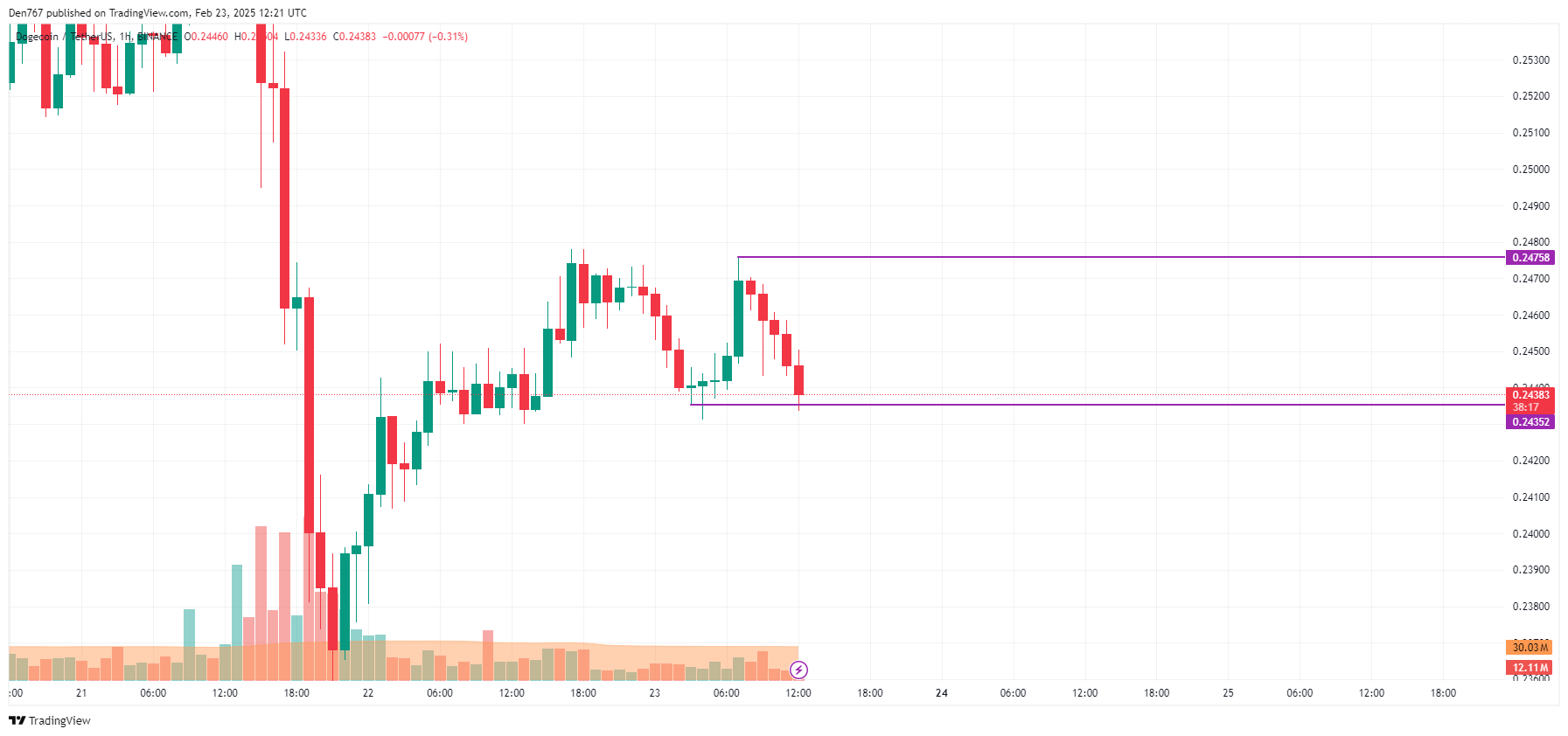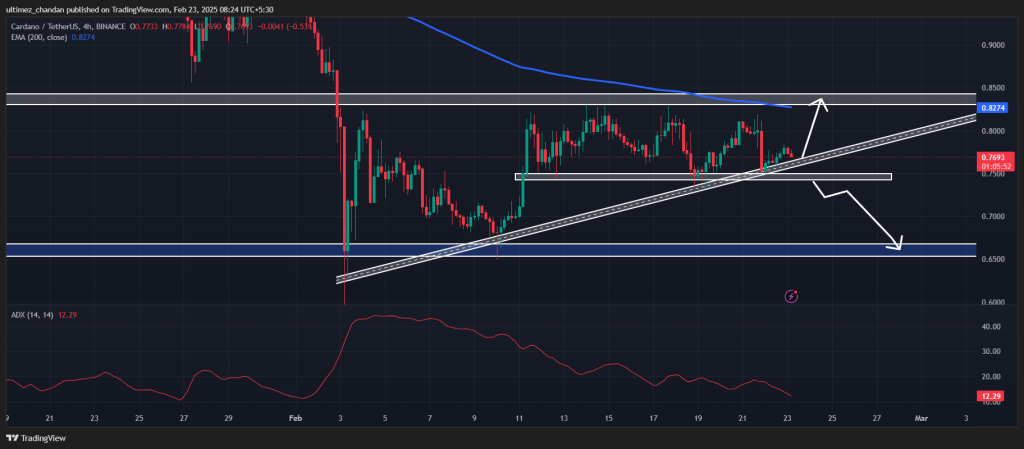Category: Forex News, News
Euro retreats toward key support level
- EUR/USD stays under modest bearish pressure and declines toward 1.0450.
- US stock index futures trade in positive territory after the long weekend.
- The pair’s technical outlook points to a loss of bullish momentum.
EUR/USD stays on the back foot and declines toward 1.0450 in the European session on Tuesday. The pair’s technical outlook points to a loss of bullish momentum but a positive shift in risk mood could help it limit its losses.
Euro PRICE This week
The table below shows the percentage change of Euro (EUR) against listed major currencies this week. Euro was the weakest against the Japanese Yen.
| USD | EUR | GBP | JPY | CAD | AUD | NZD | CHF | |
|---|---|---|---|---|---|---|---|---|
| USD | 0.34% | -0.17% | -0.23% | 0.07% | -0.11% | 0.20% | 0.13% | |
| EUR | -0.34% | -0.36% | -0.60% | -0.17% | -0.38% | -0.05% | -0.12% | |
| GBP | 0.17% | 0.36% | -0.15% | 0.19% | 0.04% | 0.31% | 0.25% | |
| JPY | 0.23% | 0.60% | 0.15% | 0.29% | 0.14% | 0.63% | 0.32% | |
| CAD | -0.07% | 0.17% | -0.19% | -0.29% | -0.16% | 0.12% | 0.06% | |
| AUD | 0.11% | 0.38% | -0.04% | -0.14% | 0.16% | 0.33% | 0.26% | |
| NZD | -0.20% | 0.05% | -0.31% | -0.63% | -0.12% | -0.33% | -0.06% | |
| CHF | -0.13% | 0.12% | -0.25% | -0.32% | -0.06% | -0.26% | 0.06% |
The heat map shows percentage changes of major currencies against each other. The base currency is picked from the left column, while the quote currency is picked from the top row. For example, if you pick the Euro from the left column and move along the horizontal line to the US Dollar, the percentage change displayed in the box will represent EUR (base)/USD (quote).
Following a three-day weekend in the US, trading conditions are starting to normalize on Tuesday. The benchmark 10-year US Treasury bond yield gains nearly 1% on the day above 4.5%, supporting the US Dollar (USD) and weighing on EUR/USD early Tuesday.
Meanwhile, US stock index futures were last seen rising between 0.2% and 0.4%. In case Wall Street opens on a bullish note, the USD could lose interest and help EUR/USD hold its ground. Since the US economic calendar will not feature any high-tier data releases, investors could remain focused on risk perception in the second half of the day.
On Wednesday, the Federal Reserve (Fed) will release the minutes of the January policy meeting. Preliminary February HCOB Manufacturing and Services Purchasing Managers’ Index (PMI) for the Eurozone and Germany on Friday could be the next data releases that could influence the Euro’s valuation.
EUR/USD Technical Analysis
The Relative Strength Index (RSI) indicator on the 4-hour chart declines toward 50 and EUR/USD closed the two 4-hour candles below the 20-period Simple Moving Average (SMA), reflecting a loss of bullish momentum.
Looking south, first support could be spotted at 1.0440 (Fibonacci 61.8% retracement level of the latest downtrend) before 1.0400 (100-period SMA, Fibonacci 50% retracement) and 1.0365 (200-period SMA). On the downside, resistances align at 1.0500-1.0510 (round level, Fibonacci 78.6% retracement), 1.0550 (static level) and 1.0600 (static level, beginning point of the downtrend).
Euro FAQs
The Euro is the currency for the 19 European Union countries that belong to the Eurozone. It is the second most heavily traded currency in the world behind the US Dollar. In 2022, it accounted for 31% of all foreign exchange transactions, with an average daily turnover of over $2.2 trillion a day. EUR/USD is the most heavily traded currency pair in the world, accounting for an estimated 30% off all transactions, followed by EUR/JPY (4%), EUR/GBP (3%) and EUR/AUD (2%).
The European Central Bank (ECB) in Frankfurt, Germany, is the reserve bank for the Eurozone. The ECB sets interest rates and manages monetary policy. The ECB’s primary mandate is to maintain price stability, which means either controlling inflation or stimulating growth. Its primary tool is the raising or lowering of interest rates. Relatively high interest rates – or the expectation of higher rates – will usually benefit the Euro and vice versa. The ECB Governing Council makes monetary policy decisions at meetings held eight times a year. Decisions are made by heads of the Eurozone national banks and six permanent members, including the President of the ECB, Christine Lagarde.
Eurozone inflation data, measured by the Harmonized Index of Consumer Prices (HICP), is an important econometric for the Euro. If inflation rises more than expected, especially if above the ECB’s 2% target, it obliges the ECB to raise interest rates to bring it back under control. Relatively high interest rates compared to its counterparts will usually benefit the Euro, as it makes the region more attractive as a place for global investors to park their money.
Data releases gauge the health of the economy and can impact on the Euro. Indicators such as GDP, Manufacturing and Services PMIs, employment, and consumer sentiment surveys can all influence the direction of the single currency. A strong economy is good for the Euro. Not only does it attract more foreign investment but it may encourage the ECB to put up interest rates, which will directly strengthen the Euro. Otherwise, if economic data is weak, the Euro is likely to fall. Economic data for the four largest economies in the euro area (Germany, France, Italy and Spain) are especially significant, as they account for 75% of the Eurozone’s economy.
Another significant data release for the Euro is the Trade Balance. This indicator measures the difference between what a country earns from its exports and what it spends on imports over a given period. If a country produces highly sought after exports then its currency will gain in value purely from the extra demand created from foreign buyers seeking to purchase these goods. Therefore, a positive net Trade Balance strengthens a currency and vice versa for a negative balance.
Written by : Editorial team of BIPNs
Main team of content of bipns.com. Any type of content should be approved by us.
Share this article:








